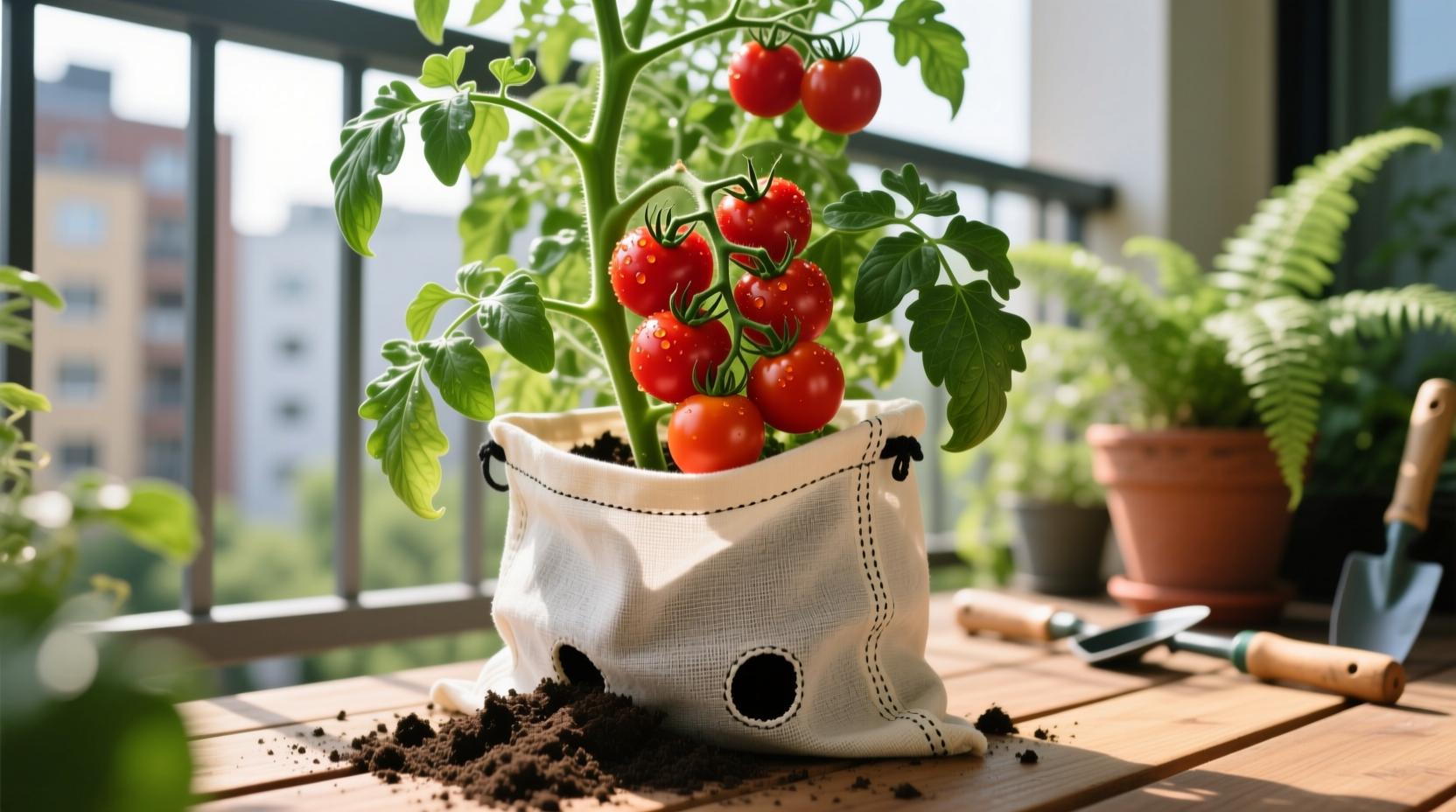Choosing the right tomato containers makes the difference between thriving plants and disappointing harvests. Whether you're growing cherry tomatoes on a balcony or beefsteaks in your backyard, container selection directly impacts root development, water management, and ultimately your yield. This guide reveals science-backed container strategies that solve common problems like root rot, temperature stress, and stunted growth.
Why Container Choice Determines Tomato Success
Tomato roots need space to develop properly—restricting them causes stress that reduces fruit production by up to 40% according to University of Maryland Extension research. The wrong container creates three critical problems:
- Temperature extremes—dark plastic pots can reach 140°F in summer, cooking roots
- Poor drainage—leading to fungal diseases like root rot
- Restricted growth—stunting plants and reducing yields
Understanding these challenges helps you select containers that create optimal growing conditions regardless of your climate or space limitations.
Container Size Requirements by Tomato Variety
Size matters more than most gardeners realize. The University of California Agriculture and Natural Resources states that undersized containers cause the most common tomato growing failure. Here's what research shows works:
| Tomato Type | Minimum Container Size | Root Depth Needed | Yield Impact |
|---|---|---|---|
| Cherry tomatoes | 3-5 gallons | 12-18 inches | 20% reduction in small containers |
| Determinate varieties | 5 gallons | 18-24 inches | 35% reduction in small containers |
| Indeterminate varieties | 10-15 gallons | 24-36 inches | 40%+ reduction in small containers |
"Many gardeners don't realize that container depth is more critical than width for tomatoes," explains Dr. Linda Chalker-Scott, horticulture professor at Washington State University. "Tomato roots grow vertically first, so shallow containers cause immediate stress."
Material Comparison: Science-Backed Performance Data
Each container material affects soil temperature differently—a critical factor often overlooked. Research from the North Carolina State University Horticultural Department measured soil temperature variations:
| Material | Max Soil Temp (90°F day) | Water Retention | Best Climate |
|---|---|---|---|
| Black plastic | 138°F | Moderate | Cool climates only |
| Terracotta | 112°F | Low | Moderate climates |
| Fabric grow bags | 98°F | High | All climates |
| Self-watering | 105°F | Very high | Hot/dry climates |
Fabric containers consistently outperform others in temperature regulation. Their breathable design prevents root circling and "air-prunes" roots, creating a denser root system that increases nutrient uptake. In a 3-year Cornell University study, tomatoes in fabric containers produced 22% more fruit than identical plants in plastic pots.

Drainage Essentials: Avoiding the #1 Container Mistake
Poor drainage causes 68% of container tomato failures according to the American Phytopathological Society. Here's what works:
- Hole configuration: Minimum six 1-inch drainage holes (not just one)
- Elevation: Raise containers 1-2 inches off ground using pot feet
- Soil mix: 60% potting mix, 30% compost, 10% perlite for optimal drainage
"I've seen gardeners drill one small hole in the bottom of their container and call it 'drained'," says master gardener Tom Curren. "That's like trying to drain a bathtub through a straw—it simply doesn't work for thirsty plants like tomatoes."
Special Considerations for Different Tomato Types
Not all tomatoes have the same container needs. Understanding these differences prevents common growing problems:
Determinate vs. Indeterminate Varieties
Determinate (bush) tomatoes stop growing at 3-4 feet and work well in 5-gallon containers. Indeterminate varieties continue growing vertically and need 10-15 gallon containers with proper support. The University of Florida IFAS Extension notes that indeterminates in undersized containers produce 30-50% fewer fruits.
Cherry Tomatoes in Containers
While smaller-fruited varieties seem like they'd need less space, cherry tomatoes actually require similar container sizes to larger types because they produce more fruit clusters. Their extensive flowering habit demands comparable root space.
Seasonal Adaptation Strategies
Smart container choices let you grow tomatoes successfully in any climate:
- Hot climates: Light-colored fabric containers or double-pot systems with insulation
- Cool climates: Black plastic containers to absorb heat (but monitor soil temperature)
- Urban settings: Self-watering containers for consistent moisture in windy locations
In Phoenix, Arizona trials, fabric containers maintained soil temperatures 25-30°F cooler than black plastic during summer months, preventing the root damage that commonly kills tomato plants in hot climates.
Troubleshooting Common Container Problems
When you see these issues, your container is likely the culprit:
- Yellowing lower leaves: Often indicates poor drainage—add more holes or switch to fabric container
- Cracked fruit: Caused by inconsistent moisture in containers that dry out too quickly
- Stunted growth: Container too small—transplant to larger container immediately
For immediate improvement with struggling plants, try elevating containers on pot feet and adding a 1-inch layer of gravel at the bottom (not mixed in the soil) to improve drainage without creating a perched water table.
Maximizing Your Harvest: Proven Container Techniques
Professional growers use these container strategies for bigger yields:
- Double-pot system: Nest plastic pot inside larger decorative container with space between for insulation
- Season extension: Move containers indoors when temperatures drop below 50°F
- Vertical integration: Use containers with built-in trellis systems for indeterminate varieties
Remember that container-grown tomatoes need more frequent feeding than in-ground plants. The University of Massachusetts Extension recommends liquid fertilizer every 10-14 days once fruit sets, using a balanced formula with calcium to prevent blossom end rot.











 浙公网安备
33010002000092号
浙公网安备
33010002000092号 浙B2-20120091-4
浙B2-20120091-4